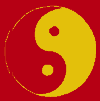
| HOME | ASTROLOGY | KABBALAH | DEAD SEA SCROLLS | SCIENCE | BIOGRAPHY | FORUM | CONTACT |

|
|
Back to previous page
|
Back to Illustrated Page
| Click to print page |
 |
|
Yin and Yang coumadincoumadinsurgical abortion vs medicalmedical vs surgical abortionprednisolon kurprednisolon 5 mgfluconazol virkningstidfluconazol cyp3a4 fluconazol uti fluconazol pro medicinThe Yin Yang The classic Chinese definition of Yin and Yang refers to the Sun and the Moon to illustrate this archetypal partnership. This is the basic polarity of the astrological horoscope, the two ‘halves’ or partners of the chart. Male and female, the two halves within us all. The origin of the Yin Yang symbol has been traced back to observations of the Sun’s cycle through the year, marked by the length of shadow it casts : shortest at the Summer Solstice, longest at the Winter Solstice. This is explained in detail by Allen Tsai : http://www.chinesefortunecalendar.com/yinyang.htm
Allen Tsai also emphasises the connection of this symbol with the I Ching or Book of Changes, the ancient book of oracles which is the sacred text of Taoism. The I Ching oracles are founded on the Eight Tri-grams which are composed of combinations of yin and yang. The trigrams are defined by universal cosmic and elemental imagery : the Sun, the Moon, the Earth, the Heavens, the Wind, the Mountain, Thunder, the Lake. The Chinese character used to express this idea of ‘changes’ in the Book of Changes, is itself derived from an original character which showed the Sun above the Moon. The concept of Yin and Yang in Chinese thought is closely associated with the five astrological elements, designated in China as earth, water, fire, wood and metal. The spot of light in the dark, dark in the light, highlights the infinite balance of the opposites and the principle of change. Nothing is pure and unalloyed. Everything contains within it the seed of change and its own transformation. These opposite spots of dark in the light and light in the dark can be seen as symbolic of this symbiotic, mutually dependent, mutually supportive relationship. Physically the influence of the Sun on the Moon is obvious. Metaphysically the influence of the Moon on the Sun is perhaps even greater, astrologically, psychologically. The Moon represents the screen of our conscious minds, our limited ego-conscious minds. This screen reflects mere glimpses of the much greater consciousness of our spirit, our heart, our deeper Unconscious, the Sun within. When we relax a little, our dreams may give us more. We are only aware of the Sun through the Moon. As physically, we cannot look at the overwhelming brightness of the Sun directly. The influence of the astrology of the Tree of Life in the Tao is evident in the arrangement of the circle of the Tri-grams which marvellously matches the corresponding characters of the eight major planets in their astro-Kabbalistic natures on the Tree of Life. The principles of this astrology and particularly the metaphysics of the five elements are evident in the meditation diagram 'the Centre in the Midst of the Conditions,' from a celebrated Taoist text, The Secret of the Golden Flower. The Chinese emperor was always the Son of Heaven, no empty reference. When his astrologers failed to predict an eclipse, two thousand years before Christ, the emperor fell, failing the trust of the ‘mandate from heaven.’ For an empire fo naltrexonenaltrexonealcoholismmedication.com naltrexone implant removal unded on faith in the magic of oracles, the power of unseen forces to shape our every destiny, neglecting the connection with the celestial energies was death.Bruce Lee insists on the unity the duality of Yin Yang represents : The Yin Yang symbol is also called Tai-Chi. Tai-Chi translates as ‘the Supreme Ultimate,’ defined as the Indefinable, the Transcendent Oneness beyond all form, all duality. Although, perhaps under Buddhist influence, the Taoist faith does recognise the duality of spirit and matter, the original principle of Tai-Chi, the Eternal Tao, makes no distinction. All is one. The essence of spirit is the same as the essence of matter. Apart from this, this transcendent, unnameable principle is very close to the descriptions the Hindus use for the spirit of Brahma |
| Back to previous page | Back to Illustrated Page | Click to print page |